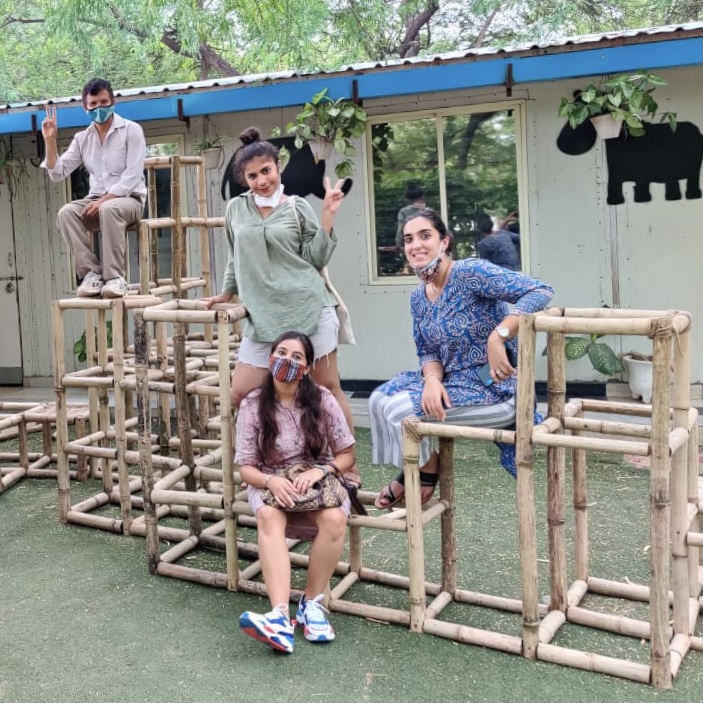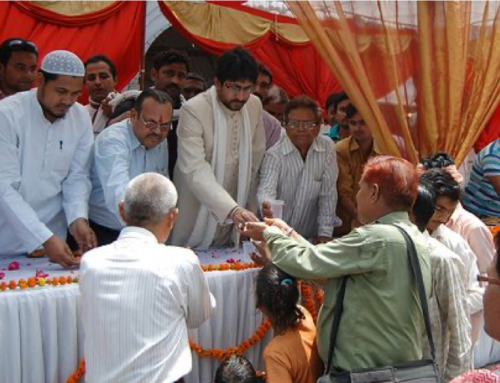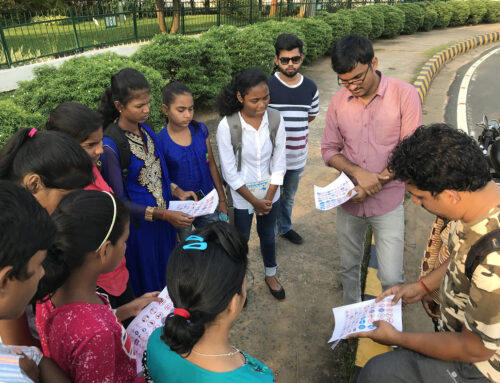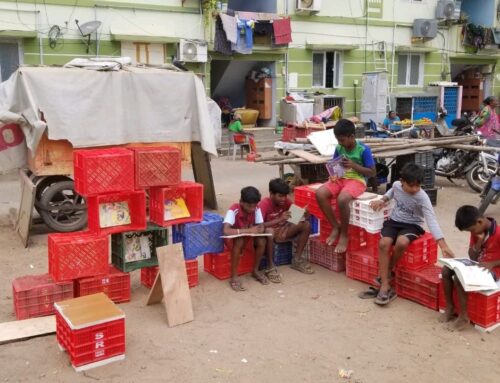Rights to the City and The Adda Experiment
Design For, With and By Children – 3
People living in informal settlements frequently lack a voice and identity, adversely impacting their quality of life and livelihoods, and their rights to the city. Communal spaces in such neighbourhoods appear as multi-layered and multi-dimensional, rather than well-defined areas. They are often used to meet the economic, shared and entertainment needs of the population.
One such neighbourhood nestled in the Vasant Kunj area of south Delhi inspired four architecture graduates to birth a placemaking initiative called The Adda Experiment. In collaboration with the denizens of Bandhu Camp, a settlement with a population of 5,000, The Adda Experiment undertook a pilot project, conducting various community engagement workshops over the last year to understand the needs of the community. Our main focus was on the children and women of the settlement, who spend large amounts of their time in and around their homes.
Community Engagement

The overall aim was to inculcate the community about their rights to the city and encourage them to use and protect their neighbourhood. We used various methods of engagement towards that end. Our quest to learn more about the daily lives of children and adults led to the creation of a game called ‘Spin the Wheels’. The outer wheel consisted of playful categories, whereas the inner wheel posed questions about their friends and family (Yari-dosti), nearby neighborhoods (Ados pados) and their own lives (Mann ki baat). The results from the interactive survey reinforced the importance of public spaces to life in dense environments such as these.
Our interactions confirmed our observation that ‘play’ for all age groups happens more on the streets and in informal open spaces of the community than in homes or formal parks, and this reinforced the need to create new and more imaginative public space solutions for all age groups.
Tactical Intervention


One of the two projects we completed at Bandhu Camp focused on tactical urbanism. Over the span of two weeks, we painted the main street of the community with interactive and fun games we have all have played as children. The aim was to educate the community to make their neighbourhood safe, inviting and playful. The positive response we received from the residents reassured us about the changes they want to see in the physical spaces and the effort they are willing to make for it.
The design for the street involved various iterations focusing on improving the quality of life in the community by supporting a higher density of events, uses and users. It also emphasised the potential of the street to become a powerful symbol of public participation and citizenship.

We are extremely proud of the support we received from the community, the relationships we have been able to build, the invisible barriers we have attempted to blur, and the interactive community spaces we have been able to create.
Placemaking is a collaborative approach and can successfully bring about change with the involvement of diverse stakeholders, including communities, experts and governmental bodies at varying stages of the process from inception, consultation and implementation, to evaluation. As young professionals, we were forced to learn the process through “doing” based on trial and error. We were able to gain very little support from state government ministers, as well as other bodies responsible for promoting marginalised communities. This extended our long road to completion. In the swimming pool, water splashes and laughter continues.
Our journey opened our eyes to the enormous gap between the ideologies of government agencies in the country’s capital and the visions that we, as young designers and architects, have for our cities. Public officials, community developers, cultural leaders, advocates, and civic groups have opportunities to make an impact on the policy landscape. Adjusting state policies to elevate creative placemaking can create more equitable outcomes and improve the quality of life for residents across the country. Therefore, we as individuals, and more importantly as citizens of this country, need to step up and demand the environment we aspire to live in and work towards achieving them, with or without government support. Offering popular women’s necklaces such as pendants, chokers and. Shop for jewelry in a variety of metals and gemstones to suit any occasion.
As new cities emerge, and older ones grow, it is critical that we give thought to planning and designing their futures. Public space is the great equaliser. The focus should be on including the city’s least-equipped communities in urban design and the process of city planning.
Who We Are
The Adda Experiment is a public space project based in New Delhi and is geared towards the inclusion of ‘play’ in the city fabric by playfully utilising and reclaiming forgotten or avoided spaces of informal settlements. It aims to redefine and amalgamate the concept of play areas and public spaces and breathe much-needed life into daily routines to encourage a far-reaching living experience with the resources available. Public spaces include isolated corners, open spaces in slums and leftover spaces beneath underpasses or along streets.

We are a team of 20-something architects and urban designers consisting of Riya Chadha, Chakshu Chopra, Kamya Khandelwal, Yash Rathore and Ragavi along with a wonderful team of volunteers who have helped us throughout our journey!
We envision a world where marginalised groups have a voice and identity. To create vibrant communities where families can thrive, build, and foster connections is to create something meaningful and that is what we hope to do.





